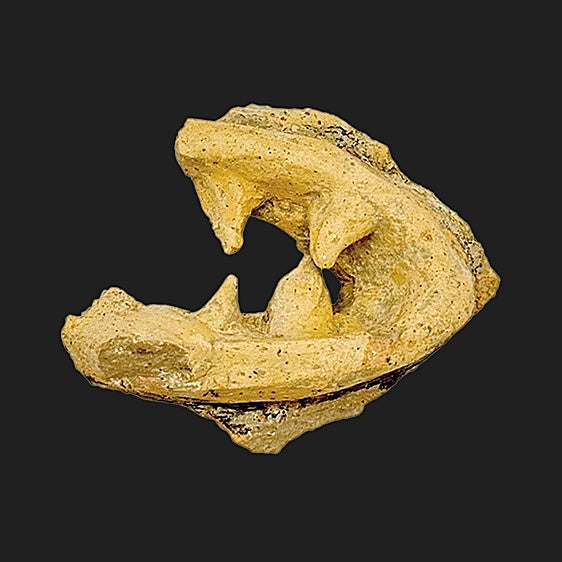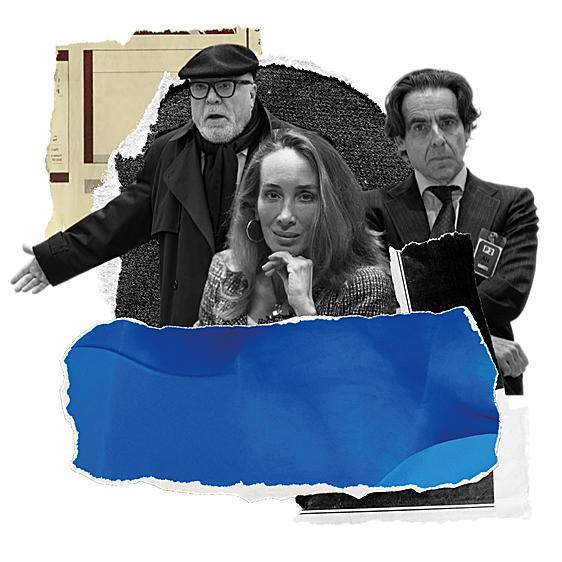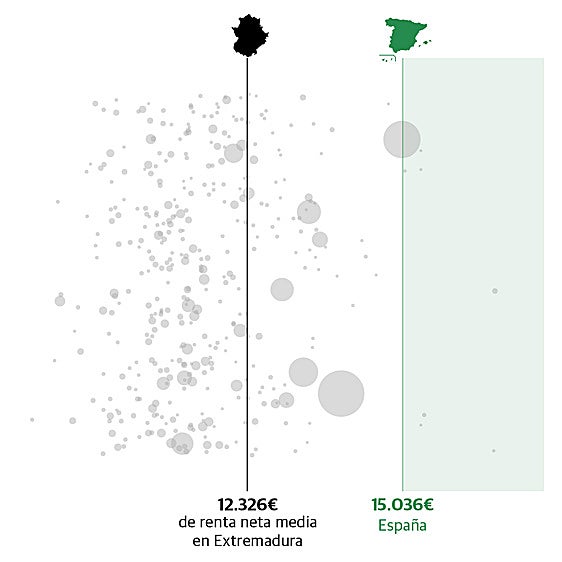When a simple sneeze can result in broken bones
Lifestyle. ·
Osteoporosis is the cause of over nine million fractures a year and it is especially prevalent in post-menopausal womenELENA MARTÍN
Friday, 4 November 2022, 11:45
Carmen Sánchez discovered that she had osteoporosis when she fell and broke her wrist at the age of 54. This is a systemic and chronic condition which is characterised by a progressive loss of bone mass. It makes the bones more porous and, as a result, increases the probability of fractures occurring.
For Carmen, that fall marked the start of a long list of broken bones. "Right now I have nine fractured vertebrae. I'm not in pain but it's annoying and it affects my quality of life," she says. "At first I could do just about anything except carry heavy things, but now I am more bent overand I use a walking stick, so a lot of everyday and domestic tasks are harder now".
In fact, years ago the traumatologist told her not to make beds or even bend down to load or empty the dishwasher, which complicated her daily life.
Every year 330,000 people in Spain suffer fractures due to osteoporosis, which affects 22.5 per cent of women and 6.8 per cent of men over the age of 50, according to the AECOSAR association (of which Carmen is treasurer). In total, nearly three million people are affected in Spain, and worldwide the figure is 300 million. Nearly nine million fractures occur every year.
The problem is also getting worse. "These days, average life expectancy has greatly increased and the population pyramid is inverting so there is a higher incidence of age-related problems such as osteoporosis," explains Francisco Baixauli of La Fe university hospital in Valencia, who is also a member of the Spanish Orthopaedic and Trauma Surgery Society (SECOT).
What causes osteoporosis? "There are two types. The most common one is caused by ageing and it mostly affects post-menopausal women–for example, Carmen had an early menopause, before she was 40, and that influenced the way her condition developed - because the lack of the hormone oestrogen interferes with the creation of bone mass. Secondary osteoporosis, which is much less common, occurs as a result of endocrinal (hyperthyroidism, diabetes), or rheumatological (rheumatoid arthritis) or gastrointestinal (such as coeliac disease) illnesses, eating disorders (the lack of nutrients has a negative effect on bone construction), certain medications such as corticoids and immunosuppressants prescribed following a transplant, or bad lifestyle habits (smoking and excessive alcohol consumption), among other causes," says Dr Baixauli.
Also, genetics has a lot to do with osteoporosis, explains Nuria Guañabens, a rheumatologist at the Hospital Clinic in Barcelona, coordinator of the OsteoResSer group and spokeswoman for the Spanish Rheumatology Society (SER).
A silent epidemic
Whether primary or secondary, the main problem with osteoporosis is that there are no symptoms until a fracture occurs.
"In fact we, the orthopaedic surgeons, are often the ones who diagnose osteoporosis when a patient breaks a bone," Dr Baixauli says.
Nevertheless, on numerous occasions nobody looks into the underlying cause of a bone fracture, which is why many cases are not diagnosed and osteoporosis is often described as a 'silent epidemic.
In fact, according to AECOSAR, since the Covid-19 pandemic the number of diagnoses has dropped by 60 per cent.
During the past couple of years many people have given up healthy lifestyle habits which are good for bone health, and that means there is a risk of a worse diagnosis when their condition is finally detected.
"A bone may appear to be something static but in fact it is a living organ which is created and destroyed during lifetime depending on how strong it is, and that depends on whether or not a person takes exercise. After the age of 35, bone destruction starts to surpass bone construction and that results in a gradual loss of bone mass which, if it gets worse, becomes an illness: osteoporosis," Dr Baixauli explains.
This situation means that even something which has a minor impact, such as a sneeze or a sudden turn of the body, can make bones break.
For this reason, preventive practices such as moderate daily exercise (weight-lifting, walking outdoors, running, climbing stairs, dancing) and eating a diet high in calcium and vitamin D, always under the supervision of a specialist, are very beneficial in preventing the type of fractures which are associated with osteoporosis.
"The most common fractures are the wrist, hip and vertebrae, although they can occur to any bone," says Guañabens. "Some aren't painful. For example, only one in three cases of fractured vertebrae suffer painful symptoms, but others can be very painful. In addition, some are associated with high morbidity, such as a broken hip, for the loss of autonomy they cause".
In fact, only 40 per cent of people who have suffered one of these fractures are able to return to their previous lifestyle, and this is why it is so important to consult a doctor to rule out osteoporosis when breaks of this type occur.
With regard to treatment, beyond a healthy lifestyle there are medications (antiresorptive, osteo-forming or dual-action) which can be applied depending on the characteristics and needs of each patient, but osteoporosis can never be eradicated because there is no cure for it.
This is why, from her long experience of living with this condition, Carmen Sánchez is so keen to stress the importance of an early diagnosis, because it can prevent fractures and save the health service a great deal of money.
"Although there is a cost for the health service when tests for osteoporosis, such as densitometry, are carried out, osteoporosis treatment is not a great expense for them, unlike treating broken bones" she says.
Strengthening exercises
0. Before starting. Exercise should be done regularly but without causing pain. The ideal is to adapt it to your physical condition and abilities. AECOSAR recommends going to classes with instructors who know about osteoporosis, such as those organised by the association. If this is not possible, there are some exercises on its website which can be done after first checking with your GP and they consist of three series with five repetitions each.
1. Standing exercises. Facing the wall, with the back straight and knees slightly bent, place your hands shoulder-width apart. With elbows at 90º, push the wall for a few seconds and return to the starting position. After finishing the series, another exercise in the same posture is to 'walk' your hands up the wall until your arms are fully extended and then return to the starting position.
1. Sitting exercises. Sitting with your back straight, place your hands on the back of your neck. Inhale slowly as you move your elbows back and exhale as you return to the starting position. The same can be done with the arms bent at 90º at your sides, and a third version is, facing a wall, to extend your arms and rest your hands on the wall. Bring your chest forward and separate your outstretched arms from the wall alternately. You can also do the same with both arms simultaneously.
3. Kneeling exercises. Sitting on your heels and without lifting your buttocks, stretch your body and arms forwards on the floor. Then, lift each arm upwards alternately without moving your back. If you can't manage that position, do the exercise while keeping your knees at a 90º angle and bring your chest towards the floor. If it is too difficult, support your hands on something.
4. Exercises lying on your back. Lying on a mat, with your spine supported, with your arms in a cross-shape, bring your knees towards your chest and let them 'fall' to the right side without lifting your shoulders off the floor. Return to the starting position and repeat on the other side. Do not force the movement too much.
5. Exercises lying face-down. Lie on your front with a cushion under your abdomen. With arms extended forward and your forehead on the ground, lift your arms simultaneously without moving your head. Repeat the exercise, lifting the arms alternately. Afterwards, do it again but alternately lifting the arm and the opposite leg.
6. What not to do. Touching your toes with your legs straight (standing or sitting), lifting a weight with your spine bent, making sharp movements of turns of the spine, jumping... these are all exercises that put a lot of strain on the body or involve unnatural movements that can even result in crushed vertebrae.



